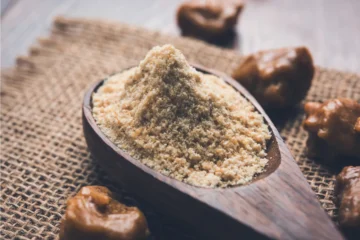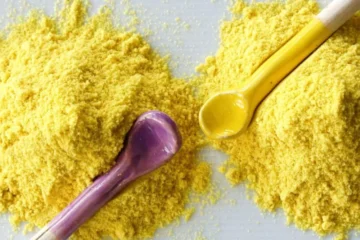Asafoetida, known widely as hing, is a pantry essential in Indian homes. But have you ever wondered where it truly comes from? In this blog, Hingwala, takes you behind the scenes — from the rugged landscapes where the hing tree grows to how that pungent spice reaches your kitchen shelf.
Where is asafoetida grown, and why is it not cultivated in India?
Short Answer: Asafoetida mainly comes from Iran and Afghanistan, as India’s climate and soil aren’t suitable for its cultivation despite India being its largest consumer.
Long Answer:
- Asafoetida is sourced primarily from Iran, Afghanistan, and Turkmenistan, where the dry, cold deserts give the plant its ideal growing conditions.
- India has tried but struggled to cultivate it locally due to mismatched soils, warmer climates, and lack of suitable altitudes.
- The Ferula plant needs cold winters, well-drained sandy soils, and dry environments, which are hard to replicate in most Indian farming zones.
- Although India imports nearly all its hing, new government research is exploring cultivation in the Himalayan belt, especially in Ladakh.
- Until local production scales up, India will continue importing this valuable spice, which adds complexity to both pricing and availability.
How is asafoetida extracted from the Hing tree, and what makes it so pungent?
Short Answer: Asafoetida is extracted by slicing the roots of the Ferula plant, which releases a milky gum that dries and becomes pungent due to natural sulfur compounds.
Long Answer:
- Farmers carefully cut the rootstock of the Ferula plant, allowing a milky white sap (latex) to slowly seep out.
- This sap hardens into resin lumps when exposed to air, usually turning reddish-brown as it dries.
- The strong, sulfur-like smell comes from natural compounds like ferulic acid and sulfur-rich asaresinotannols.
- These compounds give asafoetida its famous onion-garlic aroma, making it irreplaceable in many vegetarian dishes.
- Once collected, the resin is either packed as-is or further ground and blended into powders or pastes for easier cooking use.
Is there a difference between raw asafoetida and the powdered version we buy?
Short Answer: Yes — raw asafoetida is pure resin, very potent, while the powdered version sold in stores is mixed with flour or starch to make it milder and easier to use.
Long Answer:
- Raw asafoetida comes as hard, sticky resin chunks that need crushing or frying before use, making them less practical for everyday kitchens.
- Commercial powders usually contain only 25-40% asafoetida, blended with rice flour, wheat flour, or gum arabic as carriers.
- These fillers dilute the intense aroma, making the powder easier to measure and cook with in small home quantities.
- Some chefs and traditionalists still prefer raw resin for its purity and unmatched strength, especially for pickles or large-batch cooking.
- Powdered versions often include anti-caking agents to extend shelf life and prevent clumping in humid environments.
Comparison Table: Raw vs. Powdered Asafoetida
| Aspect | Raw Asafoetida | Powdered Asafoetida |
|---|---|---|
| Purity | 100% resin | 25-40% hing, rest fillers |
| Form | Sticky resin lumps | Dry, fine powder |
| Ease of Use | Requires crushing or heating | Ready to sprinkle |
| Flavor Strength | Very strong, concentrated | Milder, balanced |
| Shelf Life | Long if airtight | Moderate, can clump |
What are the environmental or ethical concerns related to asafoetida farming?
Short Answer: The main concerns are overharvesting wild Ferula plants, damaging fragile ecosystems, and ensuring fair labor conditions for local harvesters.
Long Answer:
- Most asafoetida comes from wild-harvested plants, which raises concerns about overextraction and long-term damage to natural habitats.
- The regions where it grows are often dry, arid zones already under pressure from water scarcity and desertification.
- Without proper regulation, the harvesting process can hurt local biodiversity, affecting not just the plants but also local animals and soil health.
- On the human side, many harvesters work under difficult conditions, often with limited protections or fair pay, raising ethical sourcing issues.
- Global initiatives are now encouraging sustainable cultivation, including organized farm projects and fair-trade certifications to improve conditions.
How does the quality of asafoetida vary based on its source or processing method?
Short Answer: Asafoetida quality depends on its origin, harvest timing, and processing style — with Iranian and Afghan varieties usually considered top tier.
Long Answer:
- Iran and Afghanistan produce some of the best asafoetida, thanks to ideal climates and generations of skilled farming knowledge.
- Early-season sap is typically lighter and more fragrant, while late-season harvests produce darker, stronger resin.
- Raw resin naturally holds the strongest aroma, but its quality also depends on how it’s dried and stored to preserve its volatile compounds.
- Powdered hing quality can vary widely depending on the percentage of actual asafoetida and the type of fillers used in blending.
- Premium products often mix resins from different regions to create a consistent, balanced flavor that home cooks can trust.
Conclusion
Behind every pinch of hing in your cooking lies an incredible journey — from remote deserts and ancient extraction methods to the blend you use today. By learning where asafoetida comes from and what impacts its quality, we can all appreciate this humble spice a little more. At Hingwala, we’re proud to offer only the finest, ethically sourced asafoetida, so every dish you make bursts with authentic flavor and respect for nature and tradition.





